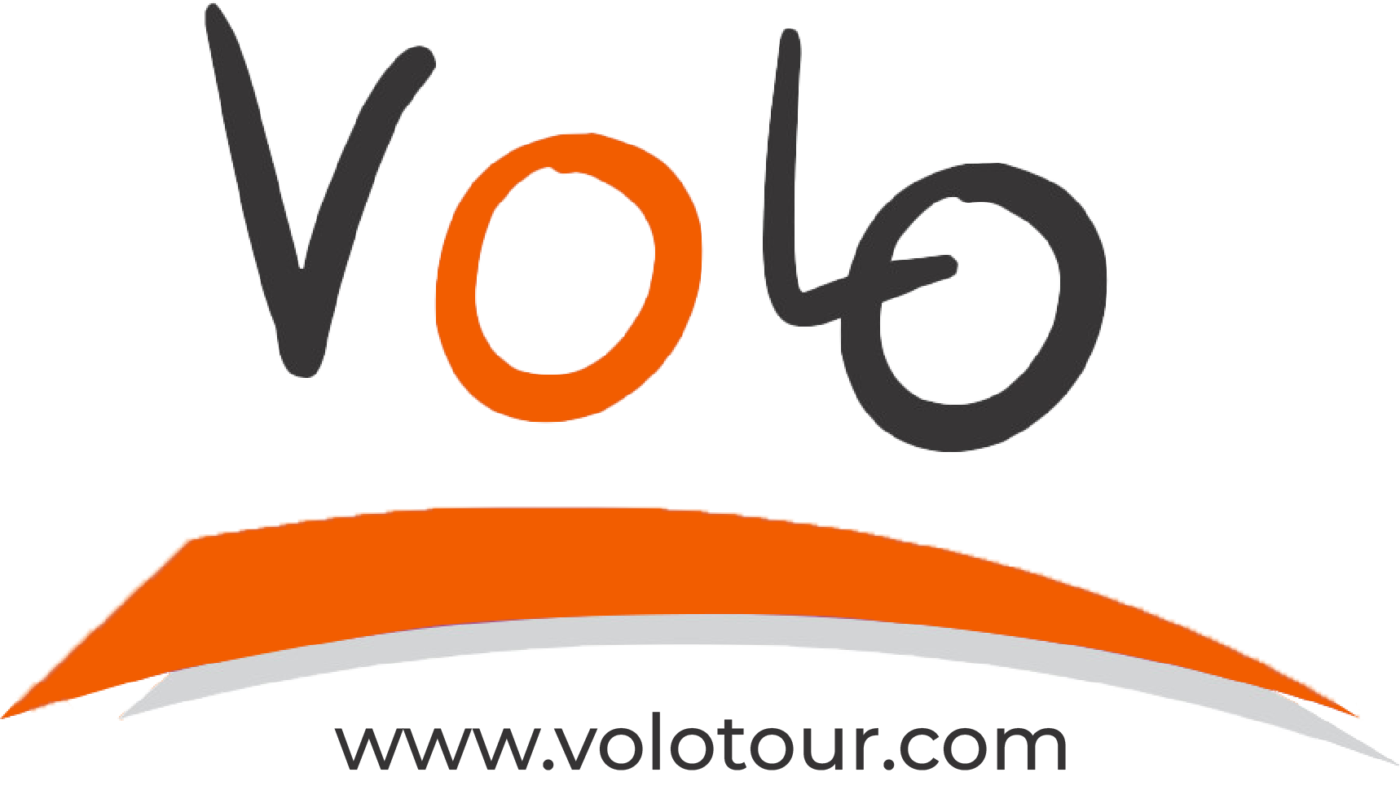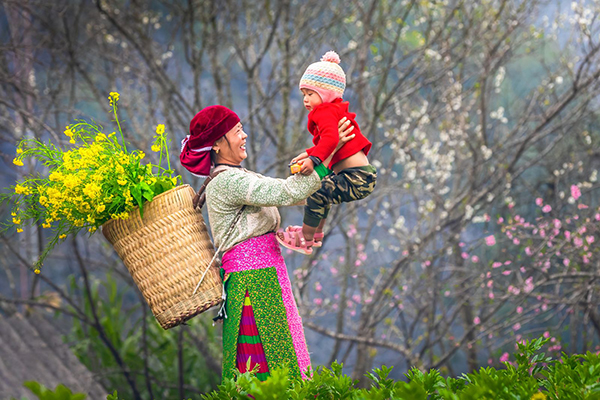The Hmong people (RPA: Hmoob, CHV: Hmôngz, Nyiakeng Puachue: 𞄀𞄩𞄰, Pahawh Hmong: 𖬌𖬣𖬵, IPA: [m̥ɔ̃́], Chinese: 苗族蒙人) are an indigenous group in East Asia and Southeast Asia. In China, the Hmong people are classified as a sub-group of the Miao people. The modern Hmong reside mainly in Southwestern China and Mainland Southeast Asian countries such as Vietnam, Laos, Thailand, and Myanmar. There are also diaspora communities in the United States, Australia, and South America.
Etymology
The term Hmong is the English pronunciation of the Hmong’s native name. It is a singular and plural noun (e.g., Japanese, French, etc.). Very little is known about the native Hmong name as it is not mentioned in Chinese historical records, since the Han identified the Hmong as Miao. The meaning of it is debatable and no one is sure of its origin, although it can be traced back to several provinces in China. However, Hmong Americans and Hmong Laotians often associate it with “Free” and/or “Hmoov” (Fate); it serves as a reminder to them of their history of fighting oppression.
Before the 1970s, the term Miao or Meo (i.e. barbarians, wild, seedlings, and even “Sons of the Soil”) was used in reference to the Hmong.In the 1970s, Dr. Yang Dao, a Hmong American scholar, who at the time was the head of the Human Resource Department of the Ministry of Planning in the Royal Lao Government of Laos, advocated for the term “Hmong” with the support of clan leaders and General Vang Pao. Yang Dao had insisted that the terms “Meo” and “Miao” were both unacceptable as his people had always called themselves by the name “Hmong,” which he defined as “free men”.Surrounding countries began to use the term “Hmong” after the U.S. Department of State used it during Immigration screening in Thailand’s Ban Vinai Refugee Camp. In 1994, Pobzeb Vang registered the term “Hmong” with the United Nations, making it the proper term to identify the Hmong people internationally.
Soon after, there was a political push from Hmong American politicians and activists to replace the term Miao with the term Hmong in China with little to no success. To date, China is the only country that does not recognize the term Hmong. Rather, they are still categorized under the umbrella term Miáo (苗) along with three other indigenous groups of people. Historically, the term Miao carried strong pejorative connotations in both China and Southeast Asia. In modern times, however, it has lost such negative connotations in China and has since been officially recognized as an ethnicity, which includes the Hmong. The Hmong in China are often happy or proud to be known as Miao while most Hmong outside China find it offensive.
Little is known about the origin of the Miao term and the people it referenced historically, since the Han used it loosely to identify non-Han in Southern China until the Tang Dynasty when evidence of its association with the Hmong became more apparent. Its origin can be dated before the Qin dynasty (221 BCE). Thereafter it was perceived as barbaric, and resurfaced more often in Chinese historical records during the Miao’s rebellions against the Ming and Qing dynasties between the 1300s and early 1900s that are still chanted by guides in most Hmong funerals today when guiding the spirits of the deceased individuals to their origins so they can reincarnate. The term Miao was more of a stereotype such as uncivilized, uncooperative, uncultivated, harmful, and inhumane than a name of an ethnic group and was used in daily conversations as an expression for ugliness and primitivity.
In Southeast Asia, Hmong people are referred to by other names, including: Vietnamese Mèo, Mông or H’Mông; Lao Maew (ແມ້ວ) or Mong (ມົ້ງ); Thai Maew (แม้ว) or Mong (ม้ง); and Burmese mun lu-myo (မုံလူမျိုး). With a slight change in accent, the word “Meo” in Lao and Thai can be pronounced to mean “cat”. The term Maew and Meo derived from the term Miao.
Origins
A DNA study in 2005 in Thailand found that Hmong paternal lineage is quite different from lu Mien and other Southeast Asian tribes. The Hmong–Mien and Sino-Tibetan speaking people are known as hill tribes in Thailand; they were the subject of the first studies to show an impact of patrilocality vs. matrilocality on patterns of mitochondrial (mt) DNA vs. the male-specific portion of the Y chromosome (MSY) variation. According to linguist Martha Ratliff, there is linguistic evidence to suggest that they have occupied some of the same areas of southern China for over 8,000 years. Evidence from mitochondrial DNA in Hmong–Mien–speaking populations supports the existence of southern origins of maternal lineages even further back in time, although it has been shown that Hmong-speaking populations had comparatively more contact with northern East Asians than had the Mien. Overall, Hmong–Mien cluster with Tai-Kadai and Sino-Tibetan speakers compared to other Chinese populations.
Homeland
The most likely homeland of the Hmong–Mien languages is in Southern China between the Yangtze and Mekong rivers.
Migration of people speaking these languages from South China to Southeast Asia took place ca. 1600–1700 CE. Ancient DNA evidence suggests that the ancestors of the speakers of the Hmong–Mien languages were a population genetically distinct from that of the Tai–Kadai and Austronesian language populations at a location on the Yangtze River. Recent Y-DNA phylogeny evidence supports the theory that people who speak the Hmong–Mien languages are descended from a population that is distantly related to those who now speak the Mon-Khmer languages.
History
China
The historical migration of the Hmong according to Hmong tradition
Hmong traditions and legends indicate that they originated near the Yellow River region of northern China, but this is not substantiated by any scientific evidence. According to linguist Martha Ratliff, there is linguistic evidence to suggest that they have occupied some of the same areas of southern China for over 8,000 years. Evidence from mitochondrial DNA in Hmong–Mien–speaking populations supports the southern origins of maternal lineages even farther back in time, although it has been shown that Hmong-speaking populations had comparatively more contact with northern East Asians than the Mien. A rare haplogroup, O3d, was found at the Daxi culture in the middle reaches of the Yangtze River, indicating that the Daxi people might be the ancestors of modern Hmong–Mien populations, which show only small traces of O3d today.
In 2011, Hmong DNA was sampled and found to contain 7.84% D-M15 and 6%N(Tat) DNA.[38] The research found a common ancestry between Hmong–Mien peoples and Mon-Khmer groups dating to the Last Glacial Maximum, approximately 15,000 to 18,000 years ago.
In 2021, researchers found that a 500 year old ‘GaoHuaHua’ population in Guangxi contributed to the ancestries of modern Hmong-Mien groups in Guangxi. The ‘GaoHuaHua’ population was modeled as having 66% Dushan-related ancestry and 34% Bushan-related ancestry. They also received Northeast Asian-related Shandong ancestry, which emerged 9,500–7,700 years ago.
Vietnam
The Hmong or Miao began to migrate to Tonkin (Northern Vietnam) in 19th century, where they struggled to establish their community on the high mountains. They recognized the Tai-speaking overlords of valleys, who were vassals of the Vietnamese court in Hue. The Hue court of Tu Duc at the time was facing crisis after crisis, unable to retake control of Tonkin and the border regions. The Taiping rebellion and other Chinese rebels spilled over into Vietnam and had caused anarchy; the Hmong communities thrived on either sides of the Red River, harmonizing with other ethnic groups, and were largely ignored by all factions.
During the colonization of ‘Tonkin’ (North Vietnam) between 1883 and 1954, a number of Hmong decided to join the Vietnamese Nationalists and Communists, while many Christianized Hmong sided with the French. After the Viet Minh victory, numerous pro-French Hmong had to fall back to Laos and South Vietnam.
In the United States
Many Hmong refugees resettled in the United States after the Vietnam War. Beginning in December 1975, the first Hmong refugees arrived in the U.S., mainly from refugee camps in Thailand; however, only 3,466 were granted asylum at that time under the Indochina Migration and Refugee Assistance Act of 1975. In May 1976, another 11,000 were allowed to enter the United States, and by 1978 some 30,000 Hmong people had emigrated. This first wave was made up predominantly of men directly associated with General Vang Pao’s secret army. It was not until the passage of the Refugee Act of 1980 that families were able to enter the U.S., becoming the second wave of Hmong immigrants. Hmong families were scattered across all 50 states but most found their way to each other, building large communities in California, Minnesota, Wisconsin, Washington State and Oregon. Smaller, but still sizeable communities also formed in Massachusetts (Lowell), Michigan (Detroit), Montana (Missoula) and Alaska (Anchorage).
Culture
Hmong people have their own terms for their cultural divisions. Hmong Der (Hmoob Dawb), and Hmong Leng (Hmoob Leeg) are the terms for two of the largest groups in the United States and Southeast Asia. These subgroups are also known as the White Hmong, and Blue or Green Hmong, respectively. These names originate from the color and designs of women’s dresses in each respective group, with the White Hmong distinguished by the white dresses women wear on special occasions, and the Blue/Green Hmong by the blue batiked dresses. The name and pronunciation “Hmong” is exclusively used by the White Hmong to refer to themselves, and many dictionaries use only the White Hmong dialect.
source: https://en.m.wikipedia.org/wiki/Hmong_people



